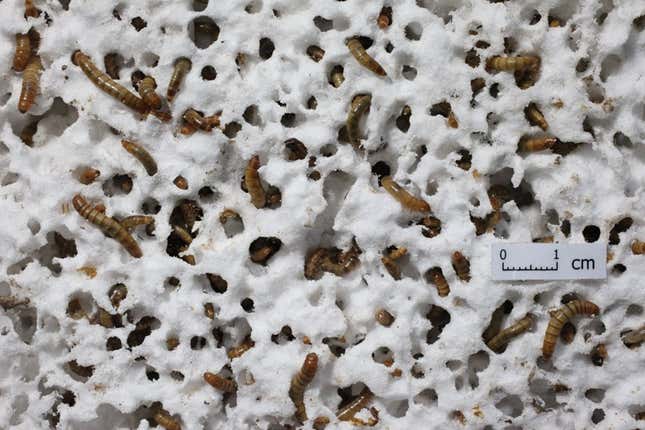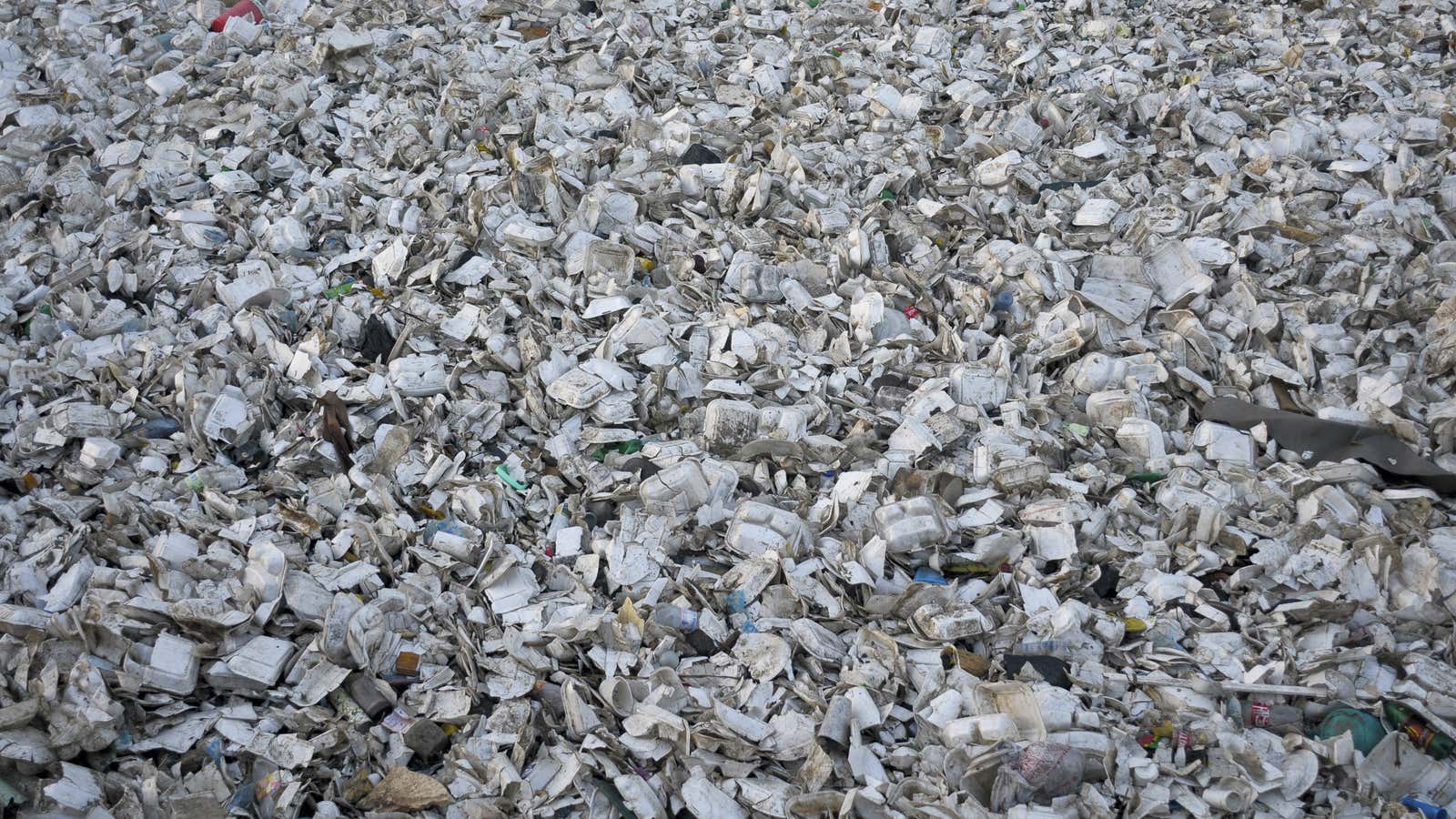Scientists might have discovered a new way to mitigate styrofoam’s damaging impact on the environment—feed it to worms.
A new study from researchers at Stanford University reveals how a species of mealworm appears capable of consuming and digesting polystyrene foam, often referred to as ”styrofoam.” (Capital “s” Styrofoam is a specific kind of polystyrene foam trademarked by Dow Chemical.)
The scientists placed 100 mealworms—the larvae of darkling beetles—on top of blocks of styrofoam, where they subsisted on nothing but the plastic, foam-like material for 30 days. The researchers then bravely examined the mealworms’ excrement, and discovered that the polystyrene had mineralized: What hadn’t been converted to carbon dioxide or biomass had turned into fecal matter, meaning it is safe for reuse in soil.

“The mealworms are the first reported insect that are capable of degrading and mineralizing a common persistent petroleum-based plastic,” the report’s authors write.
Mealworms’ safe digestion of styrofoam suggests that their stomachs contain special enzymes or bacteria that can break down polystyrene. They might be able to do the same with other plastics, too.
The research indicates that there’s hope for developing a cheap way to recycle polystyrene foam, once thought to be non-biodegradable. There are methods for recycling it in use, but they aren’t economically viable. Currently only about 12% of polystyrene gets recycled, and that’s according to the foam industry.
Turning polystyrene into worm-feed isn’t an efficient means of disposal on its own—it took the mealworms 30 days to consume 1% of a 5.8-gram styrofoam block. But identifying and isolating the enzymes or bacteria at work in the mealworms could improve the process going forward.
Polystyrene’s primary adverse effect on the environment lies in its impact on animals in both the land and sea—they can ingest or become trapped in littered styrofoam. In subtropical climates, the material can pollute bodies of water. Its bad reputation got it banned from New York City altogether.
